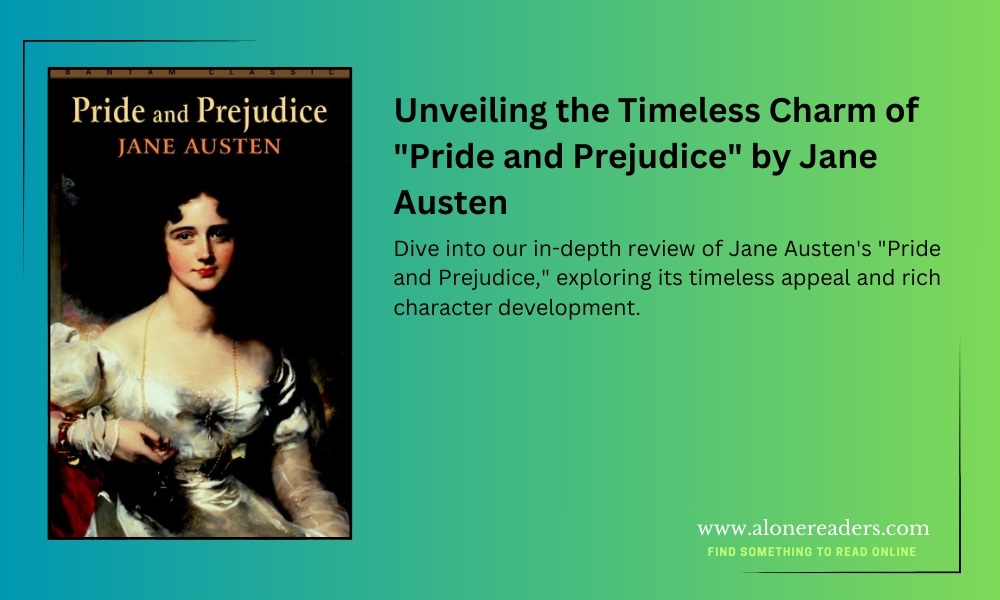
In the annals of classic literature, few novels have been as beloved and enduring as Jane Austen’s "Pride and Prejudice." First published in 1813, this seminal work of romantic fiction continues to captivate readers with its sharp wit, vivid characters, and incisive social commentary. Austen's novel is a brilliant exploration of manners, upbringing, morality, and marriage in the society of the landed gentry of the British Regency.
At the heart of the narrative is the spirited and intelligent Elizabeth Bennet, second of the five daughters of a country gentleman, Mr. Bennet. Elizabeth’s vivacious nature and sharp mind make her one of the most enduring heroines in English literature. Opposite her is Mr. Fitzwilliam Darcy, a wealthy and proud man whose demeanor initially seems haughty and dismissive. The dynamic between Elizabeth and Darcy, marked by initial misunderstandings and mutual disdain, serves as the core tension of the novel.
"Pride and Prejudice" unfolds in the quiet countryside of England, where the tranquility is often pierced by the social ambitions of the era. The story progresses through the interactions between the Bennet family and several upper-class families, notably the Bingleys and the Darcys. As the narrative unfolds, Austen masterfully exposes the characters' flaws and virtues through dialogues that are as pointed today as they were two centuries ago.
Austen's portrayal of Elizabeth as a strong-willed and opinionated young woman was somewhat revolutionary at the time. Her refusal to conform to the expected norms of women's roles and her insistence on marrying for love are central themes of the novel. This personal integrity is matched by Mr. Darcy, who must overcome his own pride and societal expectations. The evolution of their relationship, from prejudice to understanding, and eventually to love, is depicted with a realism that eschews the melodrama common in the novels of Austen’s time.
The supporting cast of characters adds richness and humor to the narrative. Mr. Bennet's dry wit provides ongoing entertainment, while Mrs. Bennet’s comic obsession with marrying off her daughters highlights the financial and social precariousness faced by women. In contrast, characters such as the sycophantic Mr. Collins and the scheming Caroline Bingley add layers of intrigue and conflict, reflecting the varied human behaviors that Austen observed in her own society.
What sets "Pride and Prejudice" apart is Austen’s use of free indirect discourse—a literary technique that allows the third-person narrator to adopt the tone and voice of a character. This method gives readers intimate insights into the characters' thoughts and feelings without abandoning the narrative's broader perspective. It is this innovative storytelling that allows the novel to delve deeply into the subtleties of personal motivation and societal pressures.
The novel also offers a critical look at the institution of marriage, which at the time was often treated as a social contract rather than a romantic partnership. Austen does not shy away from criticizing the institution, but she also recognizes its complexity, particularly in terms of economic security and social mobility for women.
Today, "Pride and Prejudice" remains a relevant study of personal and social conflict. Its themes of understanding, respect, and communication in relationships resonate with modern audiences as much as they did with its first readers. The charm of Austen's narrative lies in its timelessness—the issues her characters wrestle with, and the way those issues are presented, remain universally understandable and relevant.
In conclusion, Jane Austen’s "Pride and Prejudice" is more than just a romantic novel; it is a sharp critique of its time wrapped in a story of personal growth and societal understanding. Its continued popularity underscores not only its entertainment value but also its profound insights into human behavior and social norms. Whether you’re a longtime fan or a newcomer to Austen’s work, each reading can offer new layers of meaning and enjoyment, solidifying its place as a cornerstone of English literature.